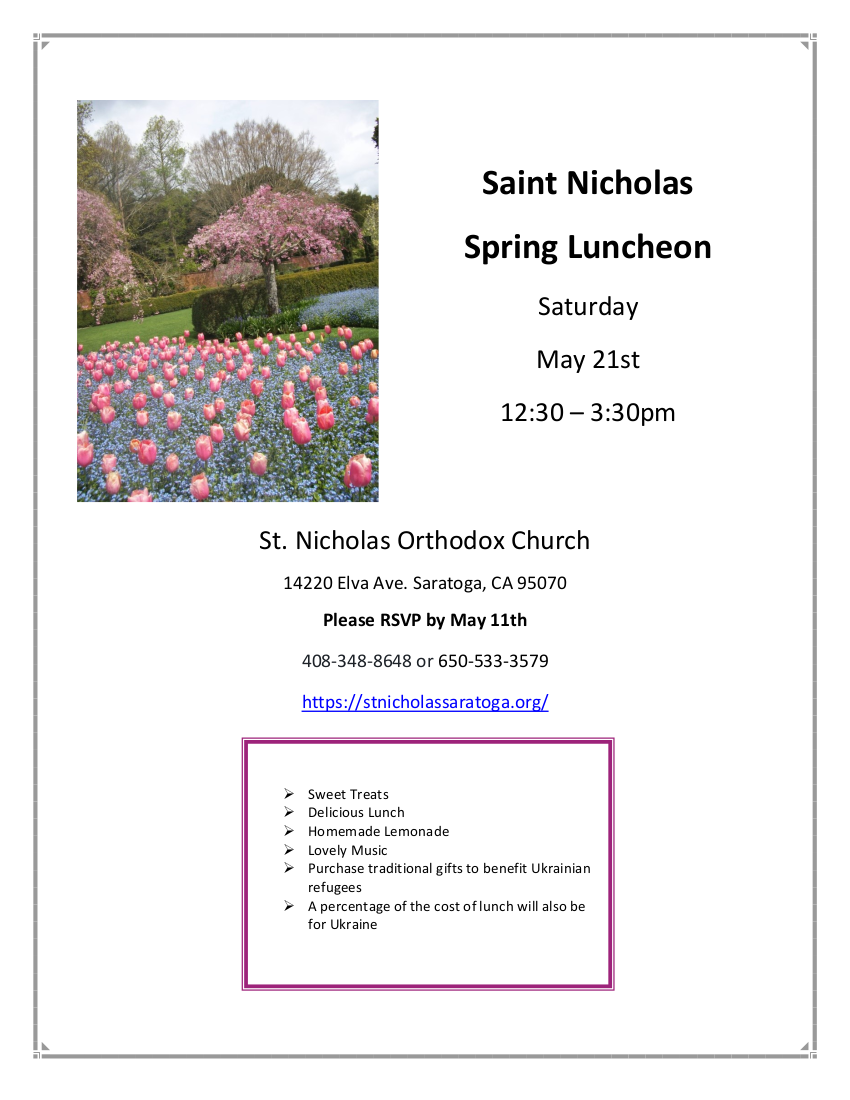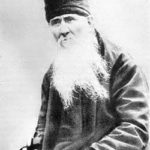
Focus on the Faith
Who are the Apostles?
On the 29th of June, we will celebrate the "Feast of the Holy Apostles Peter and Paul" In preparation for this feast I would like to share some thoughts concerning these preeminent apostles and the establishment of the early church. It is my prayer that all will draw closer to God, to an understanding of the apostles, and to those who received instruction from their immediate disciples and successors.
"And He appointed twelve, whom He also named APOSTLES (Greek: “sent out ones”), to be with Him and to be sent out..." (Mark 3:14).
The twelve apostles formed the inner core of the Lord Jesus Christ's earthly ministry. They were personally chosen by the Lord Himself. They were given the power of working miracles and were inspired to teach, to preach, and do extraordinary miracles in order to bring precious souls to Christ. On the Feast of Pentecost the Holy Spirit came down on the apostles and they were “endued with power from on high”(Luke 24:49), so that they could bear witness to the life, death, and resurrection of Jesus Christ, as He declared that they should.
"When the Bridegroom shall be taken from them.....then they shall fast" (Matthew 9:15). The Apostles' Fast is the oldest fast and the first one kept by the Christian Church. During the Apostles' Fast, the Holy Spirit spoke to them, "As they ministered to the Lord and FASTED, the Holy Spirit said: 'Separate me Barnabas and Saul for the work whereunto I have called them.' And when they FASTED and prayed and laid their hands on them, they sent them out" (Acts 13:2-3).
The apostles served the Lord Jesus and later provided leadership to the first generation of Christian believers. They were of such importance that the word "apostle" occurs approximately seventy-nine times in the New Testament. The book The Acts of the Apostles portrays the apostles as leaders of the first church in Jerusalem during the Church's first decade. The apostles truly established the church and by recognizing their fast, we contemplate their faith, the power and glory of God, and the hardships which they overcame.
The Holy Apostles, following the Lord's commandment, "Go ye therefore, and teach all nations, baptizing them in the name of the Father, and of the Son, and of the Holy Spirit" (Matthew 28:19), traveled throughout the world and established Churches within which all could receive the Grace and Illumination of the Holy Trinity. In every Church, they would ordain their successors, bishops, and elders (“Greek: presbyteroi “ or “priests”) who received the Grace and responsibility to follow in their footsteps, "Neglect not the gift that is in thee, which was given thee by prophecy, with the laying on of the hands of the presbytery" (I Timothy 4:14). This gift of Apostolic Succession, which we see in the Holy Fathers of the Church, has continued within the Church until today. In their attempts to bring as many sheep into the Lord's Flock as possible, the writings of the Apostles' successors have filled the world with countless volumes that conveyed the Faith of the Apostles to all succeeding generations.
A series of books entitled "Apostolic Fathers" is a collection of early Christian writings, written around AD 90 to the last third of the second century. They are works written by early church leaders, some of whom were the direct disciples of the Apostles. The "Apostolic Fathers" deal with practical problems that emerged with the development of individual church communities in the first and second centuries. Such problems concerned the meaning of Christianity, appropriate Christian lifestyle, authority for disputes, and the safeguarding of the authentic tradition.
The works written by the "Apostolic Fathers" include:
- Clement ( a companion of St Paul, and 3rd Bishop of Rome) - Letter
- Polycarp (Disciple of St. John the Theologian) - Letter
- Letter to Diognetus - In defense of the Christian faith
- “The Shepherd” of Hermas - a book (He is mentioned by St. Paul, by name, in Romans 16:14) -
- “Didache” or “teaching of the Twelve” - Manual written by disciples of the 12 Apostles, to instruct new converts to the faith and to direct community leaders in their work
- Letter of Barnabas (the companion and fellow worker with St Paul)
- Letters of Ignatius of Antioch, ( a disciple of Ss. Peter and John was the child who sat on the knee of Christ when He said “Whosoever, therefore, shall humble himself as this little child, the same is greatest in the kingdom of heaven” Matt. 18: 2-4.)
The writings of the disciples of the Apostles are of a pastoral character seeking to guide their readers along the Apostolic path. For this reason, they are closely related in content and style to the Epistles of the Apostles. Although they were authored in different regions of the Roman Empire, such as Rome, Syria and Asia Minor, nevertheless they present a unity in belief. Common to all these writings is their eschatological character. The second coming of Christ was regarded as imminent, and the faithful had to live their lives in preparation for the Day of the Lord. It is a frame of mind we would all do well to adopt today.
From the Fathers
St Augustine on the Feast of Peter and Paul:
"This day has been consecrated for us by the martyrdom of the blessed apostles Peter and Paul. It is not some obscure martyrs we are talking about. Their sound has gone out into all the earth, and their words to the ends of the world (Psalm 19:3-4 LXX). These martyrs had seen what they proclaimed; they pursued justice by confessing the truth, by dying for the truth.
The blessed Peter, the first of the Apostles, the ardent lover of Christ, who was found worthy to hear, "And I say to you, that you are Peter" (Mat 16:13-20). He himself, you see, had just said, "You are the Christ, the Son of the living God." Christ said to him, "And I say to you that you are Peter, and upon this rock I will build my Church." Upon this rock I will build the faith you have just confessed. Upon your words, "You are the Christ, the Son of the living God," I will build my Church; because you are Peter. Peter comes from petra, meaning a rock... Peter comes from the word for a rock in exactly the same way as the name Christian comes from Christ.
Before his passion the Lord Jesus, as you know, chose those disciples of his whom he called apostles. Among these it was only Peter who almost everywhere was given the privilege of representing the whole Church. It was in the person of the whole Church, which he alone represented, that he was privileged to hear, To you will I give the keys of the kingdom of heaven. After all, it is not just one man that received these keys, but the Church in its unity. So this is the reason for Peter's acknowledged pre-eminence, that he stood for the Church's universality and unity, when he was told, To you I am entrusting, what has in fact been entrusted to all. To show you that it is the Church which has received the keys of the kingdom of heaven, listen to what the Lord says in another place to all his apostles: "Receive the Holy Spirit; and immediately afterwards, Whose sins you forgive, they will be forgiven them; whose sins you retain, they will be retained (John 20:22-23).
Quite rightly, too, did the Lord after his resurrection entrust his sheep to Peter to be fed (John 21: 15-19). It is not, you see, that he alone among the disciples was fit to feed the Lord's sheep; but when Christ speaks to one man, unity is being commended to us. And he first speaks to Peter, because Peter is the first among the apostles. Do not be sad, Apostle. Answer once, answer again, answer a third time. Let confession conquer three times with love, because self-assurance was conquered three times by fear. What you had bound three times must be loosed three times. Loose through love what you had bound through fear. And for all that, the Lord once, and again, and a third time, entrusted his sheep to Peter.
There is one day for the passion of two apostles. But these two also were as one; although they suffered on different days, they were as one. Peter went first, Paul followed. We are celebrating a feast day, consecrated for us by the blood of the apostles. Let us love their faith, their lives, their labors, their sufferings, their confession of faith, their preaching.” (Sermo 295, 1-2, 4, 7-8; PL 38, 1348-1352)
Orthopraxis - On Entering the Church
Just as the Divine Liturgy is about to begin, the Deacon exclaims: “It is time for the Lord to act.” This liturgical phrase signals our transition from the temporal into the eternal. Leaving the world outside, we abandon worldly time and enter into God’s time. Being creatures that live in this world, we are bound by chronology; the cycles of time and the clock serve as guides for daily life. As Orthodox Christians, we anticipate being lifted “out of time” to be ushered into the heavenly dimension.
The Lord’s Day (Sunday) worship begins on Saturday evening with Great Vespers and includes Sunday morning Divine Liturgy. Although timeless, practically speaking, worship services have a specific point in time when they are scheduled to begin. Therefore, the proper time to arrive at church is well before the service is scheduled to begin, in order to pray and complete our preparations for worship. It is our custom always enter prayerfully and, when the time is proper, light candles and venerate the holy icons. We come to the church on time as if to a “Great Banquet,” with reverence because we are partaking of the very Body and Blood of Christ, our Savior. Coming to pray the Hours before the Divine Liturgy begins, will ensure that you will be settled in with plenty of time to pray without distraction. Always venerate the holy icons and light your candles well before you need to go somewhere else. Choir members should never hurry into the kliros, or altar servers should never, ever, scurry into the holy altar without first greeting Christ, His Most pure and holy mother, the saint(s) of the temple, and those of the day. It is God’s House, we are His guests. It is a matter of churchly etiquette and good manners.
In the event that arriving late is completely unavoidable, try to enter quietly and unobtrusively, observing what is happening. Remain in the Narthex if the Epistle or Gospel is being read, the priest is praying an ektenia (litany prayer), during the Little and Great Entrances, or during the homily. Never enter during the Anaphora (the prayers of consecration of the holy Mysteries).
May God bless our worship as the eternal breaks in upon the temporal
Upcoming Events
Upcoming events this month are in the online calendar, which you can subscribe to on your phone or tablet. Use the print button on the calendar to print a copy.
Click below to print a copy of this newsletter:



